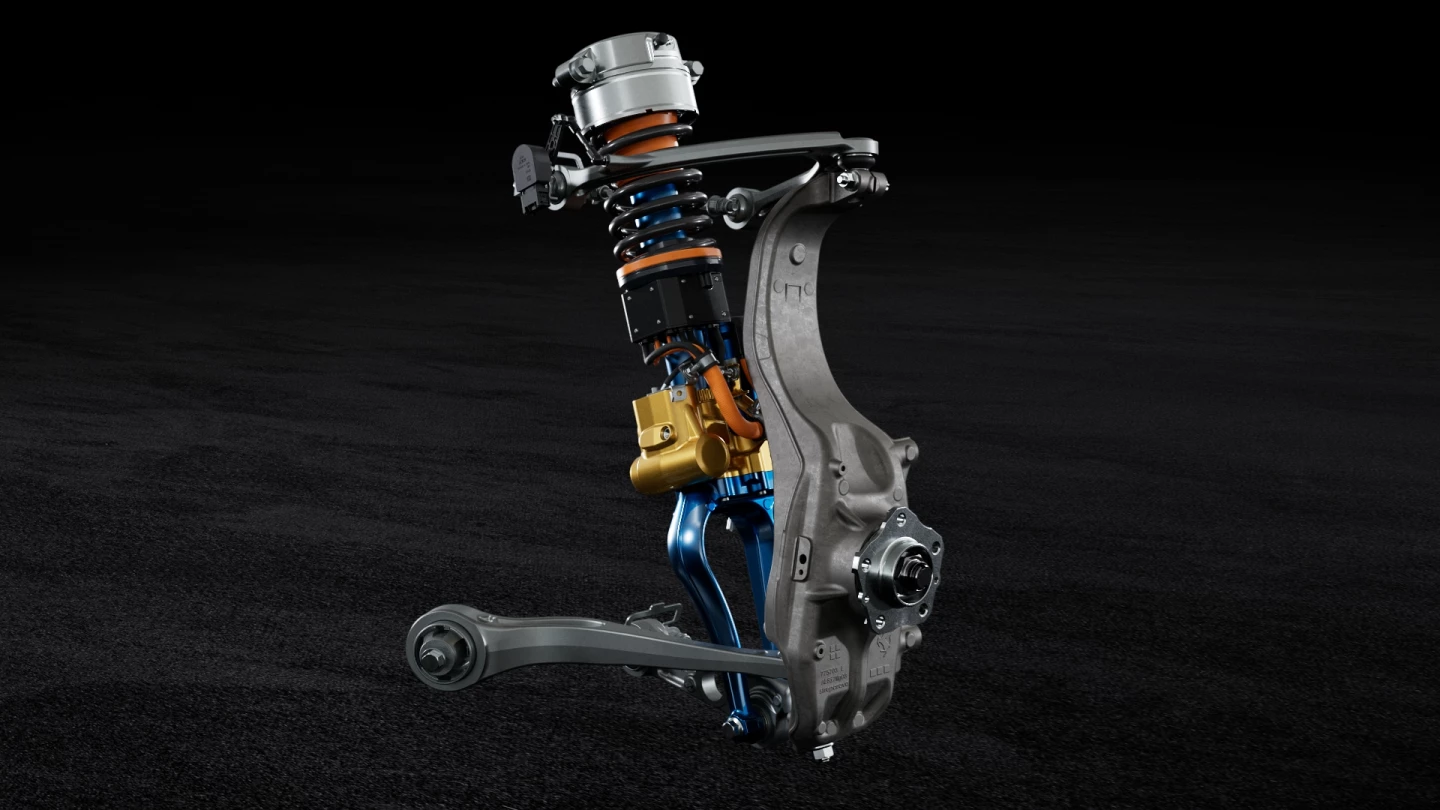Ferrari has unveiled a new four-door, four-seat vehicle – it's the first time the Prancing Horse has done so. Swearing that it's not an SUV, Ferrari bills the Purosangue as more of a shooting brake, with all the expected performance the Italian master could summon.
The Purosangue features a naturally-aspirated V12 from Maranello, opposing rear doors (aka "suicide doors"), and all-wheel drive.
Ferrari's innovation came with the weight distribution dynamics achieved in this thoroughbred. The engine sits up front, in a traditional position just behind the front axle. The gearbox is behind, on the rear axle, and the power transfer unit (to operate the front axle) is ahead of the engine. This distributes the weight of the powertrain more evenly across the wheelbase. Add in the wagon-like rear bodywork, and the position of the rear axle being pushed back near the edge, and the weight distribution for the Ferrari Purosangue is a near-perfect 49:51.
The bodywork of the new four-door Ferrari is definitely on brand with the automaker's lineup, featuring sleek, smoothly rounded lines with pronounced fenders. Comprised mostly of aluminum and other alloys, the body of the Purosangue is accented and stiffened by a lightweight, single-shell carbon fiber roof. To push the rear pillar back for better aerodynamics, Ferrari engineers hinged the rear doors backwards. This also allowed the center pillar to be thinner.
The body shell and chassis make thick use of high-strength aluminum alloys and hollow castings. The result is a chassis and body that are lighter than previous-generation 2+2 configuration Ferraris. Meanwhile, torsional rigidity and beam stiffness are higher. In addition, the front-hinged hood, a common sight on Ferrari's supercars, allows for more rigidity in the front pillar.

The design of the Purosangue's body means a slippery drive through the air, and less cabin noise as a result. Particular attention was paid to the tail of the car, which is taller and wider than most previous Ferrari designs. To minimize the impact that would have on air flow, engineers at the Prancing Horse used a suspended spoiler and a small 0.28-inch (7-mm) nolder to channel wake vortices. A slight air scoop along the roofline extends to the rear screen, to channel air to the spoiler openings.
The F14OIA powertrain is derived from previous 12-cylinder engines in Ferrari's line. It has the expected 65-degree angle between cylinder banks along with a 6.5-liter total capacity, dry sump with high pressure direct injection, and similar features of previous V12s. Its naturally-aspirated design and fast power production mean that 80 percent of torque is available at 2,100 rpm, while peak torque (528 lb-ft / 716 Nm) comes at 6,250 rpm. Peak horsepower is 715.7 (725 cv) and comes at 7,750 rpm.
The intake, timing, and exhaust for the V12 have been customized for the four-door Purosangue, but the cylinder heads and major components are from the 812 Competizione. Using Formula 1 calibration concepts, Ferrari improved efficiency of outputs and the resulting soundtrack from the engine.
The transmission in the new Purosangue is an eight-speed using an oil-bath, dual-clutch design. Using a dry sump meant the gearbox is 0.6 inches (15 mm) shorter, lowering its installation height by the same amount and thus the car's center of gravity by the same. New actuation hydraulics mean that the clutch fill times are faster, reducing gear shift times from the 7-speed DCT from which this new transmission is derived.

The Purosangue's suspension is unique to the car. Using Ferrari's Multimatic True Active Spool Valve System, the chassis combines an electric motor actuation and high-precision spool valve hydraulic dampers. This gives the interaction between body and wheels more force authority at higher frequencies for better control. The actuation motors were co-developed by Ferrari for this purpose, transmitting their force via twin lead-ball screws connected to the hydraulic damper piston rod.
Braking in the new four-door Ferrari uses Bosch's brake-by-wire system that debuted on the 296 GTB. It's modified to cope with the Purosangue's body dynamics and expectation of use on lower-grip surfaces. This coincides with the car's all-wheel drive torque vectoring system for all-weather use.
Inside the Ferrari Purosangue, designers aimed for a "sporty lounge" feel. Ferrari's sports car aesthetic can be seen inside the car, but there are more space-creating, modern touches than can be found in other Ferrari vehicles. Layout for the driver is similar to the SF90 Stradale. A 10.2-inch infotainment display dominates the center of the dash, while the driver has a similarly-sized digital instrument cluster. Each of the four seats in the Purosangue are independently adjustable. An optional high-strength fabric floor covering is available. Standard, however, is a Burmester 3D High-End Surround Sound System.

Options for the Ferrari Purosangue include replacement of the carbon fiber roof with an electrochromatic glass room, which changes tint using electric current. Massaging front seats, an air quality sensor, and a large array of color options are also available. Ferrari is additionally debuting Android Auto and Apple CarPlay accessibility as standard in this new car.
Ferrari boasts the new Purosangue as having a maximum speed of 192.6 mph (310 km/h) and a 0-62 mph (100 km/h) sprint time of just 3.3 seconds. Fuel consumption and other details are not yet available for the new Ferrari. Pricing for the car will come closer to its expected production start in early 2023.
You can see it in action – albeit briefly – in the following video.
Source: Ferrari


































